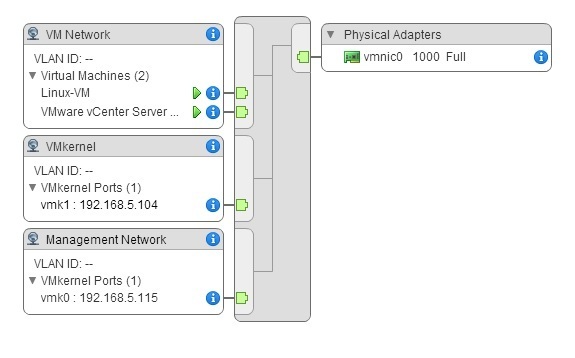Virtual switch explained
VMware has designed the vSphere suite to mimic the functions of a physical network, so a lot of the network hardware you’ll find in the real world, you will also find virtualized in vSphere. Virtual switches work very much like their physical counterparts, Ethernet switches, but lack some of their advanced functionality. They are used to establish a connection between the virtual and the physical network. A virtual switch can detect which virtual machines are logically connected to each of its virtual ports and use that information to forward traffic to the correct virtual machines. A virtual switch is connected to physical switches by using physical Ethernet adapters to join virtual networks with physical networks.
Two connection types are possible on a virtual switch in vSphere:
1. virtual machine port groups – ports used to connect virtual machines to other VMs or the physical network.
2. VNkernel ports – ports configured with their own IP address, subnet mask and default gateway to allow hypervisor management traffic, vMotion, iSCSI storage access, network attached storage (NAS) access, and vSphere Fault Tolerance (FT) logging.
In the picture below you can see a graphical representation of a standard switch in vSphere Web Client:

Two types of virtual switches are available in vSphere:
- vNetwork standard switches – managed at each individual host level.
- vNetwork distributed switches – acts as a single switch across all associated hosts in a datacenter.



